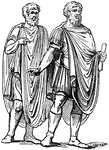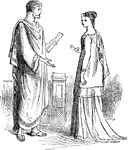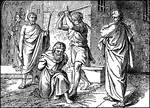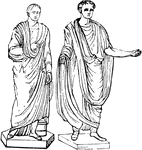Clipart tagged: ‘toga’

Abolla
A cloak chiefly worn by soldiers, and thus opposed to the toga, the garb of peace. The abolla was used…

Emperor Tiberius Wearing a Toga
Illustration of the Roman Emperor Tiberius wearing a draped toga, which was fashionable in the first…

Man and Woman in Roman Clothing
An illustration of a man and woman standing in typical Roman clothing. Clothing in ancient Rome generally…

Paul is Beheaded at Rome by the Order of Emperor Nero
Illustration of Paul, kneeling on one knee in the city streets, head bowed, awaiting execution. A man…

Roman Toga - View from the Back
A view of the back of a Roman toga. The man stands with his right foot slightly behind his left, as…

Toga
"Toga, a gown, the name of the principal outer garment worn by the romans, seems to have been received…

Roman Togas
"The following cuts represent, the first more ancient, and the second the later mode of wearing the…

Two Attendants, or Lictors, of a King or Consul
Lictors were guards of magistrates who carried fasces to show power to execute. Two men, one young,…

